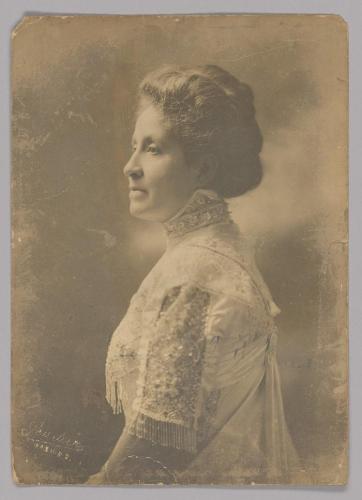
Gelatin silver print of Mary Church Terrell. Collection of the Smithsonian National Museum of African American History and Culture, Gift of Ray and Jean Langston in memory of Mary Church and Robert Terrell.
What do Mary Church Terrell, Frances Ellen Watkins Harper, Lucy Stone, Josephine St. Pierre Ruffin, Elizabeth Cady Stanton, and Ida B. Wells-Barnett all have in common? These suffragist leaders worked alongside their daughters to win the right to vote.
Historian Kate Clarke Lemay was moved by these intergenerational stories as she developed the exhibition Votes for Women: A Portrait of Persistence at the National Portrait Gallery. The exhibition, which ran March 2019 to January 2020 and can be seen in part on Google Arts and Culture, shared more than 80 years of work toward suffrage.
Early pioneers, such as activist and author Frances Ellen Watkins Harper, didn't live to see the 19th Amendment passed. Leaders mentored family members and other young suffragists to continue the fight. Some mentees broke away from older generations. For example, activist Harriot Stanton Blatch, daughter of suffragist Elizabeth Cady Stanton, disagreed with her mother. Stanton called for "educated suffrage," but Blatch believed women deserved the right to vote regardless of their level of education, race, or social class.
Lemay recently shared the challenges and joys of curating these complex stories in the New York Times. Read her article, "Winning the Right to Vote Was the Work of Many Lifetimes," to learn about Lemay's experience choosing portraits of these women to include in the exhibition.